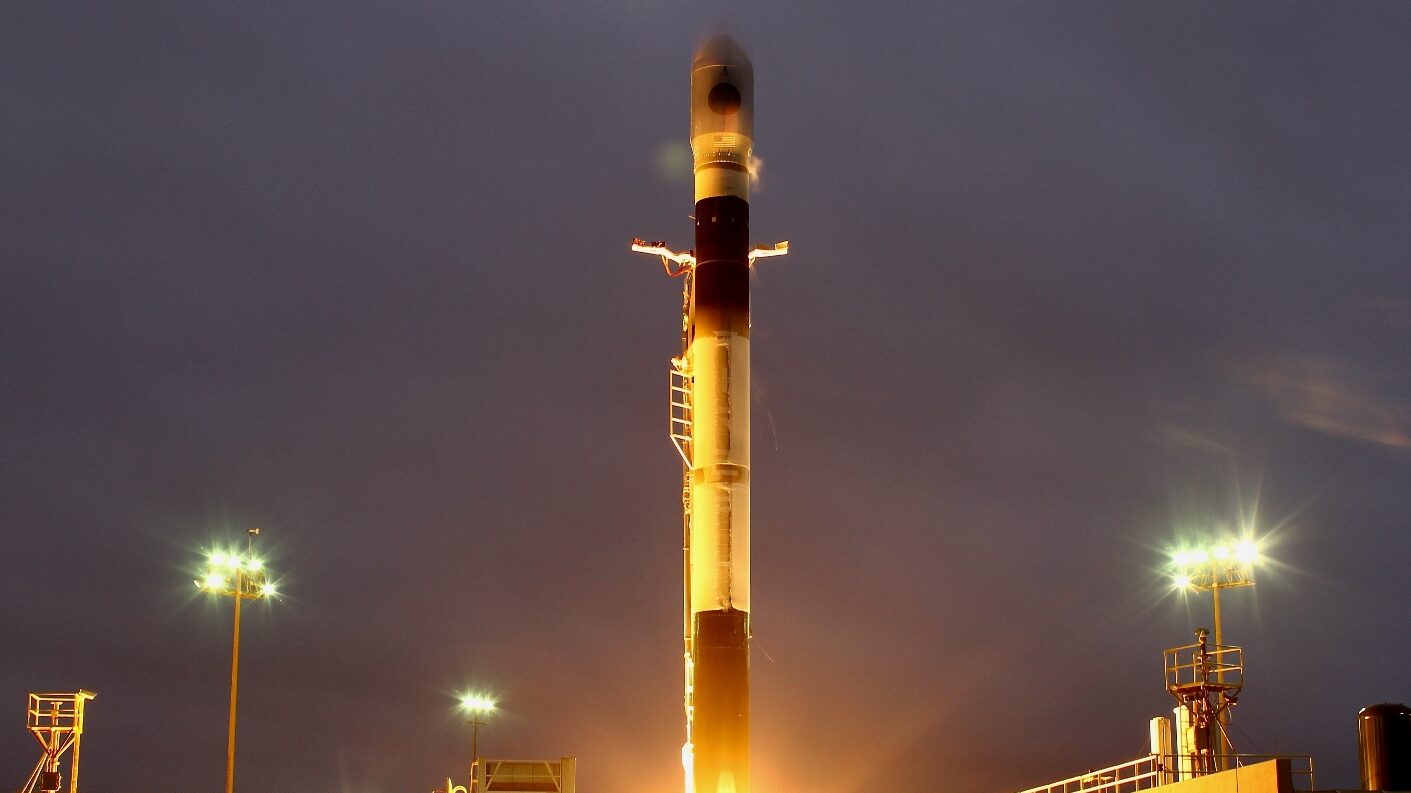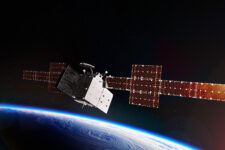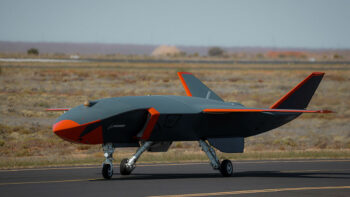
Firefly Aerospace’s Alpha FLTA003, carrying the Victus Nox satellite for Space Force Space Systems Command, successfully lifted off Sept. 14 at 7:28 p.m. PDT from Space Launch Complex 2 West (SLC-2W) at Vandenberg Space Force Base, Calif. (Courtesy photo: Firefly Aerospace)
SATELLITE 2024 — The Space Force and the Pentagon expect to award soon contracts for the follow-on to last year’s Victus Nox rapid-launch contest, called Victus Haze, according to a Defense Department official.
The announcement of the winners likely will come “this next couple of weeks,” David Ryan, space portfolio manager at the Defense Innovation Unit (DIU) told the Satellite 2024 Conference in Washington, D.C. on Monday.
DIU, which pursues novel commercial technology across all domains, is partnering with Space Systems Command’s Space Safari program office that is managing Victus Haze. Space Safari was established to directly respond to urgent launch needs of US Space Command and other combatant commands.
The contest is being planned as a second iteration of the Space Force’s Tactically Responsive Space-3 (TacRS-3) mission to launch a prototype satellite within 24 hours of a “go” order, but also is designed to quickly perform an up-close on-orbit inspection of a (simulated) threatening spacecraft.
Senior Space Force officials have been praising the successful September Victus Nox demonstration, which involved Firefly Aerospace’s launcher and a space vehicle developed by Boeing’s Millennium Space Systems, as a game-changer for the service in future great power competition.
Space Systems Command issued an invitation to bid for Victus Haze last August, which stated that to qualify vendors will need to prove that their prototype satellite can be “flight ready” within 12 to 18 months, and that it will be able to start providing threat assessments to the Space Force within 48 hours of reaching orbit.
“This will be a modified mission from the Victus Nox mission,” Ryan said, noting that “there are two parts of the mission, and DIU is working on a single part with Space Safari.”
He explained that the two sides were looking to get slightly different things out of the partnership.
“Space Safari is looking to get a better understanding of DIU’s OTA [Other Transaction Authority contracting] process,” Ryan said. “DIU is looking to integrate a number of different organizations and solutions to try to get commercially relevant technology to as many operators as necessary for the missions that we want to have. So, we’re trying to integrate while we’re prototyping.
“That’s not necessarily going to be Space Safari’s mission going forward, they but they do want to learn from this process. They wanted access to commercial technologies. They wanted to understand how to best work with commercial to adopt their cutting edge as quickly as possible to be more responsive,” he added.
The Space Force already has a small fleet of inspector satellites, called the Geosynchronous Space Situational Awareness Program (GSSAP) constellation, and is working on a successor program called SILENTBARKER with the National Reconnaissance Office. These satellites have some limited ability to maneuver so as to keep eyes on adversary satellite activities.
Meanwhile, numerous commercial operators are working on efforts to perform a variety of missions, across different orbital domains, that use similar rendezvous and proximity operations. Such missions include on-orbit refueling and propulsion units to extend the life of satellites.
Ryan noted that operationally responsive space launch isn’t a mission that likely will ever be “100 percent commercial,” because “there will likely not be a commercial end user that needs a responsive launch and a capability on target within the next couple of years.” On the other hand, he said, “the government absolutely will need it.”
Working together, Ryan explained, will drive commercial development of tech “that absolutely will be used commercially” and allow commercial firms to provide for “government needs.”






















